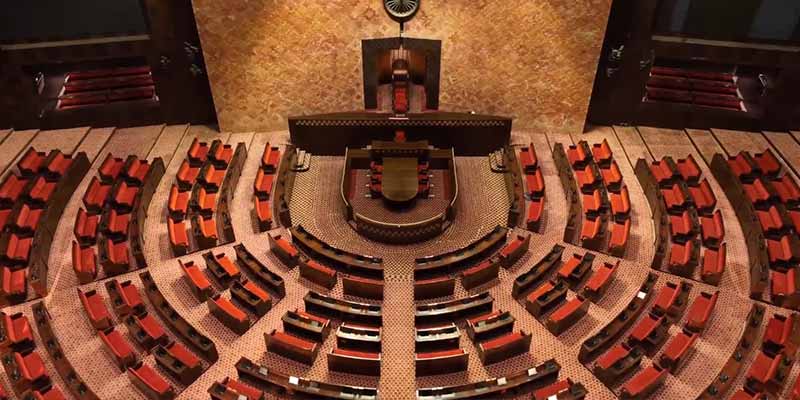- India
- Jan 30
How are members elected to Rajya Sabha?
• The Election Commission announced that the biennial Rajya Sabha polls will be held on February 27 for 56 seats.
• The nomination process will begin on February 8 with the issuance of the notification.
• While 50 members retire on April 2, six do so on April 3.
• Uttar Pradesh will have the highest number of vacancies of 10 seats, followed by Maharashtra and Bihar (six each), Madhya Pradesh and West Bengal (five each), Karnataka and Gujarat (four each), Odisha, Telangana, Andhra Pradesh, Rajasthan (three each), and Uttarakhand, Himachal Pradesh, Haryana and Chhattisgarh (one each).
• The tenure of former Prime Minister Manmohan Singh and BJP president J.P. Nadda will end in April.
• The vacancies also include seats held by nine Union ministers including Railway Minister Ashwini Vaishnaw, Education Minister Dharmendra Pradhan, Environment Minister Bhupendra Yadav and Health Minister Mansukh Mandaviya.
Members of Rajya Sabha
• Article 80 of the Constitution lays down the maximum strength of Rajya Sabha as 250, out of which 12 members are nominated by the President and 238 are representatives of the states and also of the Union Territories of Delhi and Puducherry.
• The members nominated by the President are persons having special knowledge or practical experience in respect of such matters as literature, science, art and social service.
• Rajya Sabha is a permanent House and is not subject to dissolution. However, one-third of members of Rajya Sabha retire after every second year.
• A member who is elected/nominated for a full term serves for a period of six years.
• Article 84 of the Constitution lays down the qualifications for membership of Parliament.
• The member should be a citizen of India above 30 years of age and possessing such other qualifications as may be prescribed by law of Parliament.
• The election held to fill a vacancy arising otherwise than by retirement of a member on the expiration of his term of office is called ‘bye-election’.
• Members of Rajya Sabha are elected by the elected members of the Assemblies of states and Union Territories in accordance with the system of proportional representation by means of the single transferable vote.
• While the nominated members of Rajya Sabha have a right to vote in the election of the Vice-President of India, they are not entitled to vote in the election of the President of India.
Number of Rajya Sabha seats from states/UTs:
1) Andhra Pradesh - 11
2) Arunachal Pradesh - 1
3) Assam - 7
4) Bihar - 16
5) Chhattisgarh - 5
6) Goa - 1
7) Gujarat - 11
8) Haryana - 5
9) Himachal Pradesh - 3
10) Jharkhand - 6
11) Karnataka - 12
12) Kerala - 9
13) Madhya Pradesh - 11
14) Maharashtra - 19
15) Manipur - 1
16) Meghalaya - 1
17) Mizoram - 1
18) Nagaland - 1
19) NCT Delhi - 3
20) Odisha - 10
21) Puducherry - 1
22) Punjab - 7
23) Rajasthan - 10
24) Sikkim - 1
25) Tamil Nadu - 18
26) Telangana - 7
27) Tripura - 1
28) Uttar Pradesh - 31
29) Uttarakhand - 3
30) Jammu & Kashmir - 4
31) West Bengal - 16
In total, eight members are elected from the Union Territories (3 from Delhi, 1 from Puducherry and 4 from Jammu & Kashmir). Other Union Territories are not represented in Rajya Sabha.
Manorama Yearbook app is now available on Google Play Store and iOS App Store

